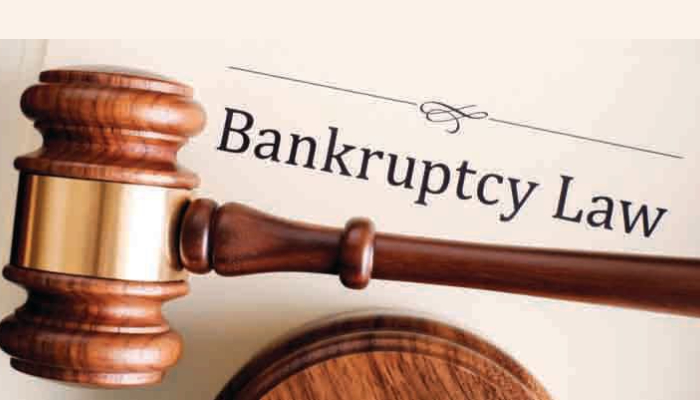
or

The President of India on 23.11.2017, promulgated the Insolvency and Bankruptcy Code (Amendment) Ordinance, 2017 (for short “Ordinance”) to amend the Insolvency and Bankruptcy Code, 2016 (for short “IBC”). The Ordinance was implemented to further strengthen the Insolvency Resolution Process and to prohibit certain persons from submitting a resolution plan who may adversely impact the credibility of the Insolvency Resolution Process under the IBC. The Ordinance also specifies certain additional requirements for submission and consideration of the resolution plan before its approval by Committee of Creditors.
The IBC received the assent of the President on 28.05.2016. The objectives of the IBC is to consolidate and amend the laws relating to reorganization and insolvency resolution of corporate people, partnership firms and individuals in a time-bound manner for maximization of value of assets, to promote entrepreneurship, availability of credit, and balance the interests of all the stakeholders. The IBC aims at an effective legal framework for timely resolution of insolvency and bankruptcy, which would support development of credit markets and encourage entrepreneurship.
The Ordinance aims to prevent unscrupulous persons, wilful defaulters from misusing or vitiating the provisions of the IBC. Recently, huge defaulter companies like Bhushan Steel, Essar Steel, Lanco Infratech, Monnet Ispat, and Electro steel etc., with over Rs. 5000 crores debt each, were referred by the Reserve Bank of India (RBI) for resolution under the IBC. In many of these cases, the original promoters themselves were among the bidders. Amid rising concerns that a debt-ridden promoter of the defaulting company could get back control of the company that is under insolvency even as banks take a hit on the loans, the new Ordinance was promulgated to tackle this situation created by the biggest non-payers i.e. Bhushan Steel, Essar Steel, Lanco Infratech, Monnet Ispat, Electron steel etc. “The Ordinance disentitles the big defaulters and makes it difficult for them to bid for distressed assets which was of their own making”, quoting Finance Minister Arun Jaitley. The Finance Minister also stated that such bidding is completely unethical and unacceptable to the Indian political system.
The Ordinance further strengthens the insolvency resolution process and prohibits certain persons and the party connected with such people from submitting a resolution plan which may adversely impact the credibility of the insolvency resolution process under the IBC.
A new section 29A is inserted in the IBC by the Ordinance which bars certain persons to submit a resolution plan or be resolution applicant. Section 29A makes certain persons ineligible to be a resolution applicant, including wilful defaulters, those who have their accounts classified as Non-Performing Assets (NPA) for a year or more. Section 29A reads as follows:
“A person shall be ineligible to submit a resolution plan if such person, or any person acting jointly with such person, or any person who is a promoter or in the management or control of such person,-
Section 29A disqualifies certain persons to be a resolution applicant and to submit a resolution plan. Section 29A as inserted by the Ordinance prohibits or bars the promoters/directors and guarantors, the holding company, subsidiary company, associate company or related parties of the corporate debtor/company undergoing an insolvency resolution process from filing resolution plans. This was needed to prevent the delinquent/errant promoters from regaining the control of the company facing insolvency proceedings by bidding in the resolution process thus, misusing the provisions of the IBC.
The Ordinance aims at putting safeguards in place to prevent unscrupulous, undesirable people from misusing or vitiating the provisions of the IBC. The amendments aim to keep-out such persons who have willfully defaulted, are associated with nonperforming assets, or are habitually non-compliant and, therefore, are likely to be a risk to successful resolution of insolvency of a company. In addition to putting in place restrictions for such people to participate in the resolution or liquidation process, the Ordinance also provides such check by specifying that the Committee of Creditors ensure the viability and feasibility of the resolution plan before approving it. Thus, the Ordinance is a step towards improving compliances, actions against defaulting companies to prevent misuse of corporate structures for diversion of funds; weeding-out of unscrupulous elements from the resolution process is a part of the ongoing reforms initiated by the Government to strengthen the IBC. These would help strengthen the economy of India and will encourage honest businesses and budding entrepreneurs to work in a trustworthy and predictable regulatory environment.
Amit Mohaan Meharia is a Law Graduate from King’s College (London) and holds a Post Graduate Diploma in Law from School of Law (Store Street). He is a Solicitor and is on the Roles of the Law Society of England and Wales. He is the Managing Partner of MCO Legals. He has been the primary think-tank in designing the idea of ‘Paperless’ office where all the workings happen in cloud and transparency is guaranteed to all clients. He has more than 20 years’ experience in Corporate Law, Commercial Arbitration and Transactional Work.

Lex Witness Bureau

Lex Witness Bureau

Lex Witness Bureau

For over 10 years, since its inception in 2009 as a monthly, Lex Witness has become India’s most credible platform for the legal luminaries to opine, comment and share their views. more...
Connect Us:


The Grand Masters - A Corporate Counsel Legal Best Practices Summit Series
www.grandmasters.in | 8 Years & Counting
The Real Estate & Construction Legal Summit
www.rcls.in | 8 Years & Counting
The Information Technology Legal Summit
www.itlegalsummit.com | 8 Years & Counting
The Banking & Finance Legal Summit
www.bfls.in | 8 Years & Counting
The Media, Advertising and Entertainment Legal Summit
www.maels.in | 8 Years & Counting
The Pharma Legal & Compliance Summit
www.plcs.co.in | 8 Years & Counting
We at Lex Witness strategically assist firms in reaching out to the relevant audience sets through various knowledge sharing initiatives. Here are some more info decks for you to know us better.
Copyright © 2020 Lex Witness - India's 1st Magazine on Legal & Corporate Affairs Rights of Admission Reserved